Designing for the Quadruple Aim
How Can the Built Environment Support Quadruple Aim Goals?
Organizations have sought many ways to achieve the ultimate outcome of high-value healthcare for patients. Since the launch of the Triple Aim target concept by Institute for Healthcare Improvement in 2008, organizations have simultaneously focused on improving the individual experience of care, improving the health of the general population and reducing the per capita costs of care.
The Introduction of a Fourth Aim
Unfortunately, as healthcare institutions worked to reach these goals, the health and satisfaction of healthcare providers and staff eroded at an alarming rate. With increased demands from patients and families, coupled with federally-mandated initiatives and challenging-to-use electronic medical records, burnout has skyrocketed across the industry. To offset this burnout, healthcare organizations recognized a fourth goal: improving the clinician experience.

Aim: Improve Clinician Experience
Burned out employees can experience detriments to their own physical health and carry with them increased concerns about mismanaging patient care plans. Moreover, constant turnover drives costs higher as HR departments search to fill vacant positions.
But when the health and wellbeing of clinicians and staff is taken into account, and there are opportunities for collaboration and respite, the Quadruple Aim creates a win-win scenario for healthcare organizations concerned with improving population health, meeting patient needs and reducing costs — without negatively impacting staff.
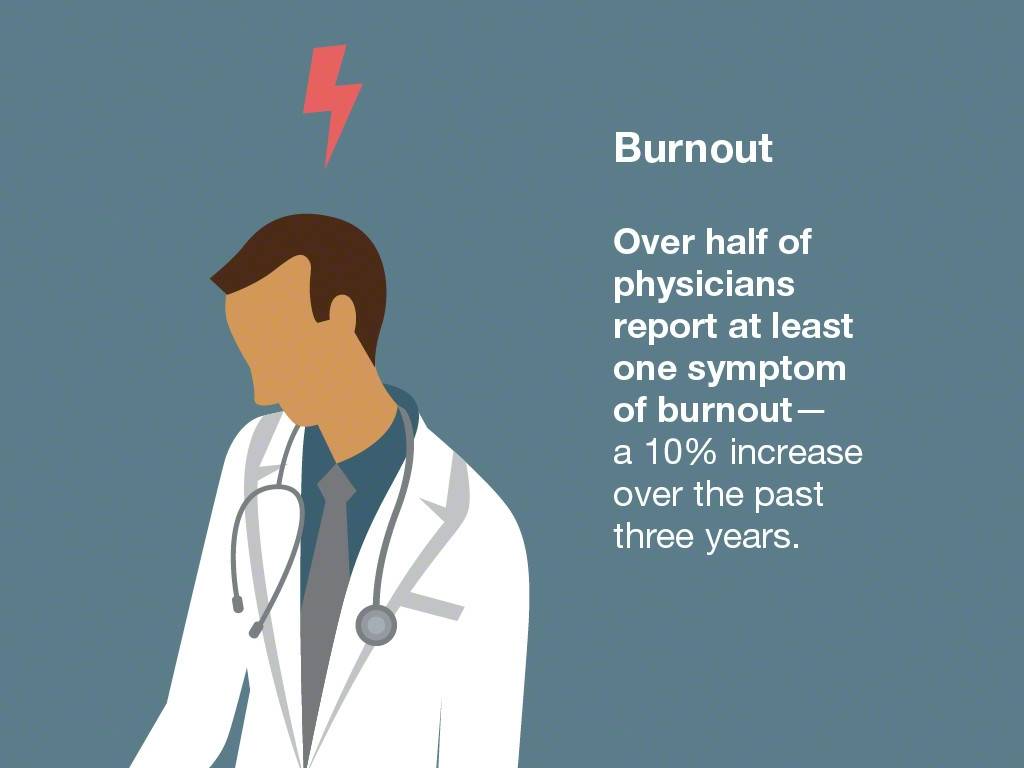
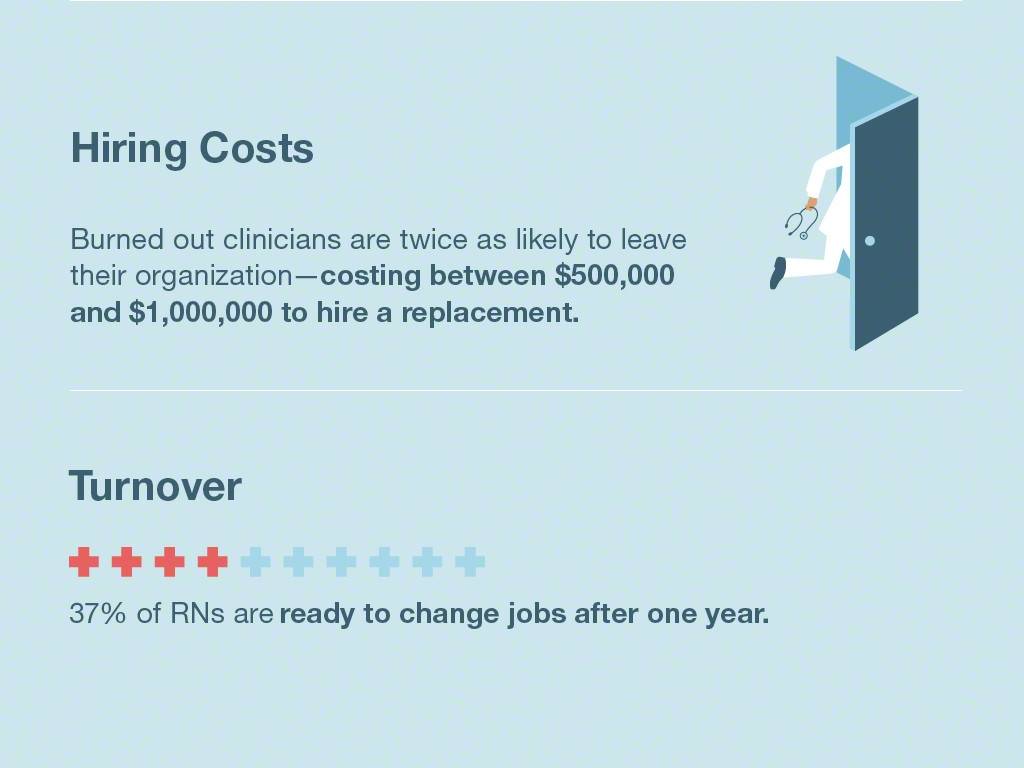
Aim: Enhance Patient Experience

Regardless of age or health status, everyone is a healthcare consumer. And every person can relate to what it feels like to visit the doctor’s office. When patients experience long wait times or too-brief interactions with their providers, they become frustrated and dissatisfied with their care experience. Patients want their healthcare experience to feel highly personalized, timely, trustworthy and respectful.
Creating conditions where wait times are minimized and productive, and appointments are focused and unhurried, can improve satisfaction for patients and their loved ones.
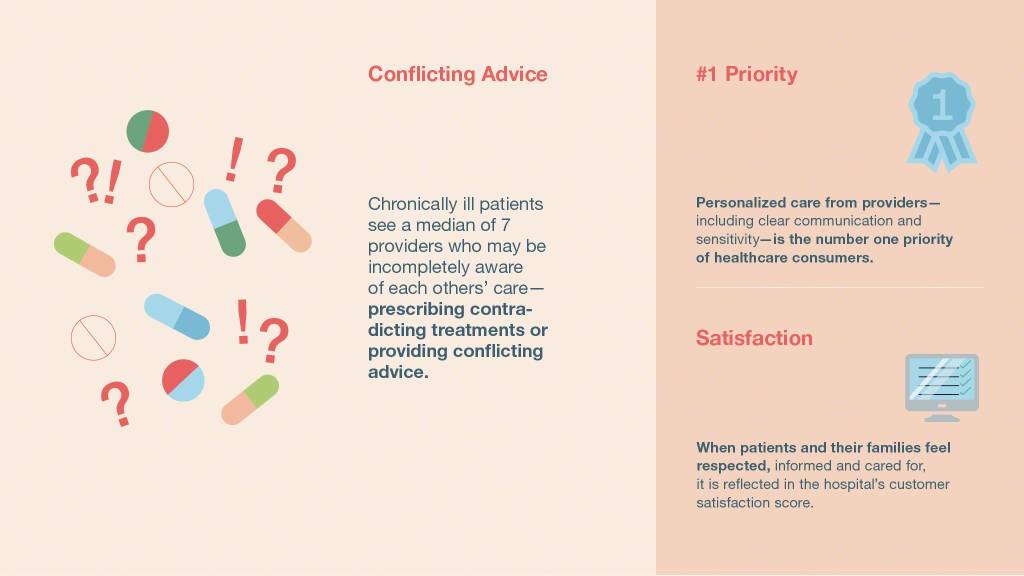
Aim: Reduce Cost

While trying to improve patient and clinician experiences, healthcare organizations are also working to reduce the cost of delivering care without impacting quality. They’re finding efficiencies in ways to deliver quality care (like through virtual visits) and focusing on outcomes and prevention to reduce repeat visits.
Designing for flexibility can help organizations adapt to changing models of care delivery while reducing the cost of renovations. Additionally, supporting infection control and creating supports to diminish the risk of falls can save extraneous costs.
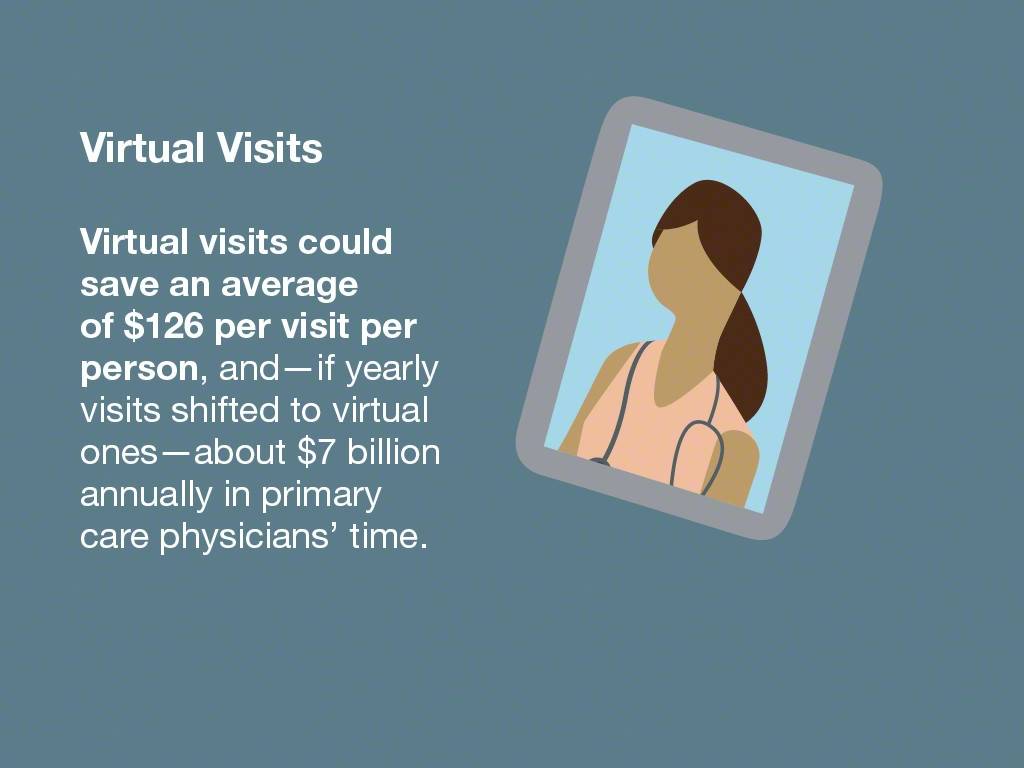
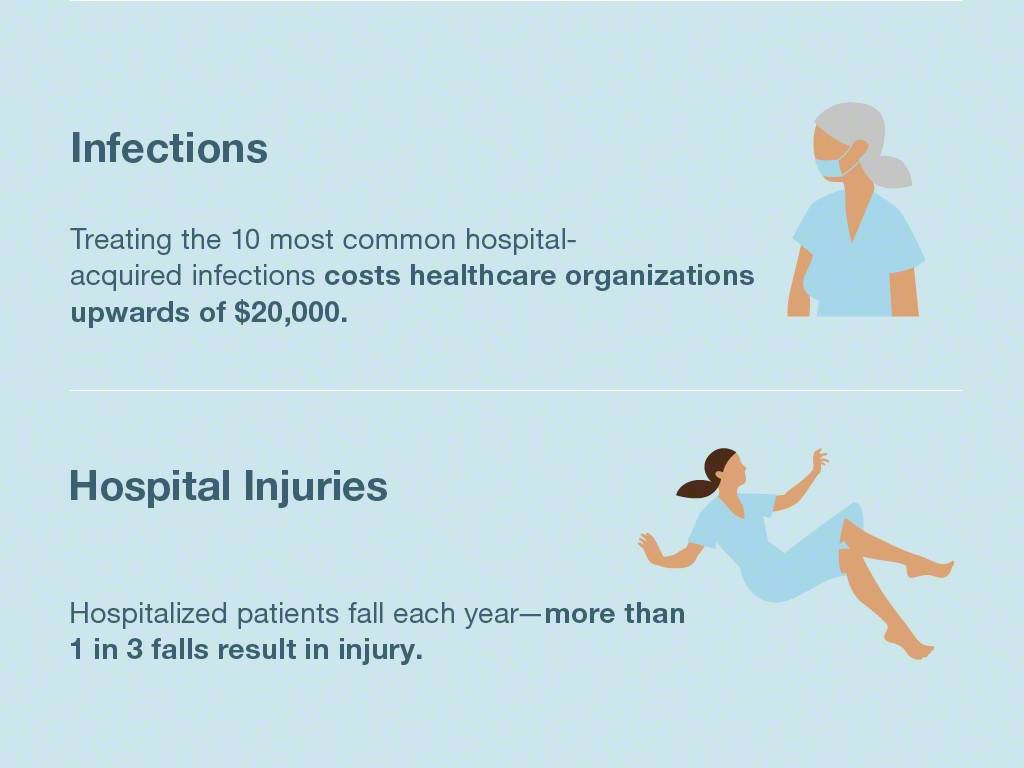
Aim: Achieve Better Population Health

Healthcare doesn’t just happen in the four walls of a hospital or doctor’s office. Healthcare happens every day, in the choices people make at home, at work and at play. When better population health is supported, healthy behaviors are incented, health disparities are reduced, and chronic conditions are well-managed. Yet achieving this goal is challenging because the majority of risk factors related to premature death come from factors outside traditional areas of healthcare (such as social and environmental factors, genetics and individual behaviors). Additionally, life stressors, including dissatisfaction at work, financial stress or caring for an aging parent, can create negative impacts on overall health.
Designing spaces with consideration for people’s wellbeing can encourage healthy choices, which in turn, can lower healthcare costs and minimize other risk factors.
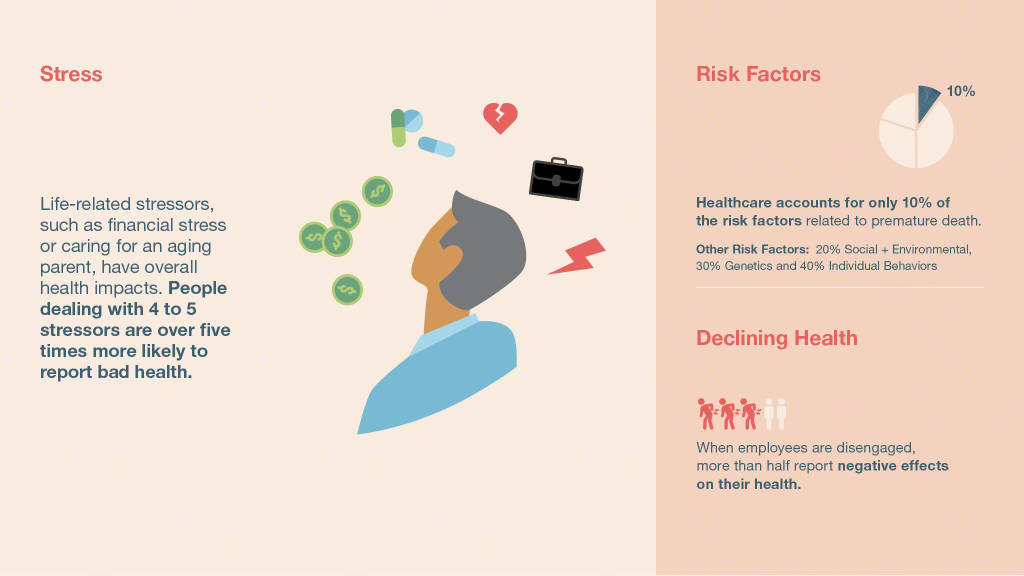
Better Health for All
Despite contending with complex and interconnected factors related to satisfaction, burnout and rising costs, healthcare leaders are looking to a future geared toward better health for all.
A focus on the built environment helps these organizations make progress toward their Quadruple Aim goals and addresses some of the factors that can inhibit achievement. Intentionally-designed spaces support people’s physical, cognitive and emotional needs, encourage healthy choices and promote seamless collaboration and communication. Flexible spaces help organizations respond efficiently to changing market conditions, thereby lowering overall healthcare costs and enhancing revenues.
Sources
(1) Shanafelt, T. D., Hasan, O., Dyrbye, L. N., Sinsky, C. A., Satele, D., Sloan, J., & West, C. P. (2015). Changes in Burnout and Satisfaction with Work-Life Balance in Physicians and the General US Working Population Between 2011 and 2014. Mayo Clinic Proceedings, 90(12), 1600–1613. http://doi.org/10.1016/j.mayocp.2015.08.023 (2) Shanafelt, T. D., Goh, J., & Sinsky, C. A. (2017). The Business Case for Investing in Physician Well-being. JAMA Internal Medicine, 177(12), 1826–1832. http://doi. org/10.1001/jamainternmed.2017.4340 (3) Kovner, Christine T., et al. “Newly Licensed RNs Characteristics, Work Attitudes, and Intentions to Work.” AJN, American Journal of Nursing, vol. 107, no. 9, 2007, pp. 58–70., doi:10.1097/01. naj.0000287512.31006.66. (4) Pham HH, Schrag D, O’Malley AS, Wu B, Bach PB. Care patterns in Medicare and their implications for pay for performance. New England Journal of Medicine. 2007;356 (11):1130-1139. (5) Cooper, Terri. “2018 Global Health Care Sector Outlook.” Deloitte United States, 27 Aug. 2018, www2.deloitte.com/global/ en/pages/life sciences-and-healthcare/ articles/global-health-care-sectoroutlook.htm (6) Wolosin, R., Ayala, L., & Fulton, B. R. (2012). Nursing Care, Inpatient Satisfaction, and Value-Based Purchasing. JONA: the Journal of Nursing Administration, 42(6), 321–325. http://doi.org/10.1097/ NNA.0b013e318257392b (7) Abrams, Ken. “Virtual Health Care: Snow, Rain, or Distance Are Not Barriers to High-Quality Health Care.” Deloitte Center for Health Solutions, 17 Sept. 2018, blogs.deloitte.com/centerforhealthsolutions/virtual-health-neither-snow-rain-distancebarriers-quality-health-care/. (8) Estimating the Additional Hospital Inpatient Cost and Mortality Associated with Selected Hospital-Acquired Conditions. Content last reviewed November 2017. Agency for Healthcare Research and Quality, Rockville, MD. http://www.ahrq.gov/professionals/ quality-patient-safety/pfp/haccost2017- results.html (9) “Falls: A Patient Safety Primer.” PSNet: Patient Safety Network, Aug. 2018, psnet.ahrq.gov/primers/primer/40/falls. (10) “Eliza Corporation Presents Data and Insights about the Health and Financial Impacts of Vulnerability at the Health Experience Design Conference.” PR Newswire: News Distribution, Targeting and Monitoring, Eliza Corporation, 25 Mar. 2013, www.prnewswire.com/news-releases/ eliza-corporation-presents-data-andinsights-about-the-health-and-financialimpacts-of-vulnerability-at-the-healthexperience-design-conference-199899891. html. (11) Krol, Aaron. “Ask the Patients, Part 2: Eliza and the Vulnerability Index.” Clinical Informatics News, Cambridge Healthtech Institute, 17 Oct. 2013, www. clinicalinformaticsnews.com/eCliniquaarticle.aspx?id=131074. (12) Artiga, S., & Hinton, E. 2018, May 10. Beyond health care: The role of social determinants in promoting health and health equity. In Henry J Kaiser Family Foundation. Retrieved August 21, 2018, from https://www.kff.org/disparitiespolicy/issue-brief/beyond-health-care-therole-of-social-determinants-in-promotinghealth-and-health-equity/ (13) Schroeder, SA (2007). We Can Do Better— Improving the Health of the American People. NEJM. 357:1221-8. (14) Crabtree, Steve. “Engagement Keeps the Doctor Away.” Gallup.com, 13 Jan. 2005, news.gallup.com/businessjournal/14500/engagement-keeps-doctor-away.aspx.


